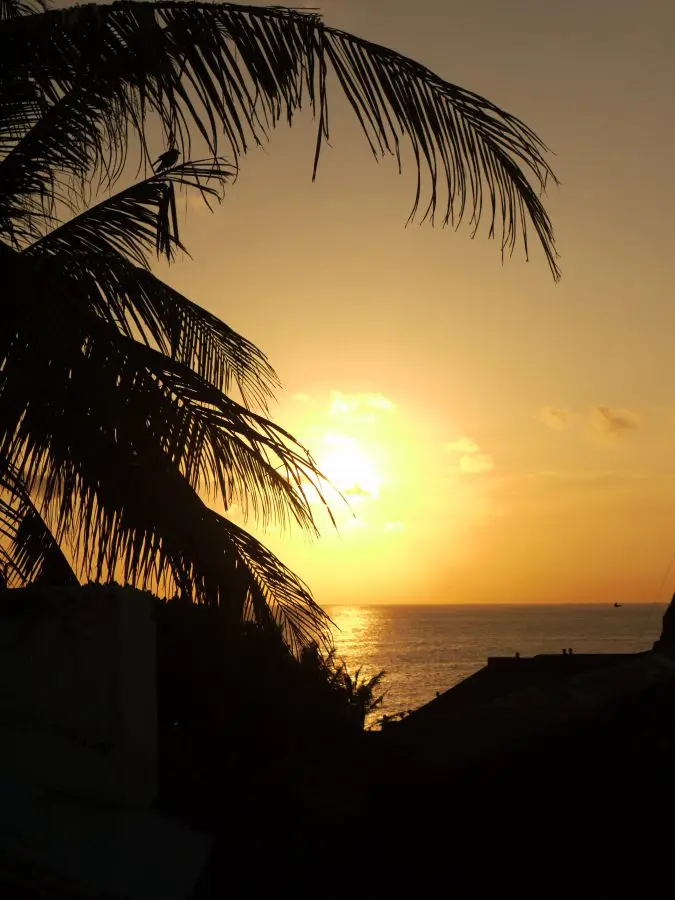Built in the seventeenth century, Galle Fort was a major port for boats travelling between Europe and Asia and acted as the main port of Sri Lanka for more than two hundred years eventually becoming a secondary harbour after the development of breakwaters in Colombo’s harbour. Today Galle Fort still stands strong, it’s mammoth walls withstanding much of the devastation of the 2004 Tsunami which severely damaged Galle town and killed many people in the area.
The thirty-six hectare Fort is an interesting place to visit and part of the attraction of visiting here is watching real life going on as normal inside the historic fort walls. Although it takes little more than an afternoon to explore the confines of the fort walls, we visited numerous times from our rental home, only thirty minutes away by bus.
One third of the houses inside the walls are owned by foreigners and a number of boutique style cafes, classy restaurants and art galleries have opened up in recent years to cater to the expat community here as well as the increasing number of visitors. With very little traffic inside the fort, it makes for a nice place to walk around admiring the fortress and the Dutch-Colonial style architecture which is apparent throughout. Late afternoon in particular is a great time to visit when the hottest part of the day has passed, fitness enthusiasts run laps of the fort, couples walk hand in hand around the walls, Muslim children go for prayers in their traditional attire and everybody pauses for a moment to watch the horizon light up as the sun sets over the Indian Ocean. After sunset the glow of the old clock tower lights up the one side of town while the beam of light from the lighthouse on Point Utrecht Bastion warns ships away from the rocks on the seaward side of the fort’s walls.
Galle itself is a major town on the south coast and is an interesting place to walk around for a few hours. Near the train and bus stations are a number of simple local eateries which may not look like much but serve up amazing Sri Lankan specialities like kotthu, hoppers and rice and curry. People here are genuine for the most part and it’s a mixing pot of Christian, Muslim and Buddhist cultures. Monks young and old dressed in bright orange robes are mixed in among the bearded Muslim shop keepers and there are numerous Christian shrines and churches scattered throughout the town. Whether walking though the bustling streets of the town or strolling lazily around the historical grounds of Galle, there’s no denying that Galle has a distinct feel to it and has rightfully earned it’s place as a central feature of the Sri Lankan southern coastline.

Brian is a travel writer, photographer, blogger, travel addict and adventure-junkie. Being outdoors, getting off the beaten track and outside his comfort zone is what makes him tick. Brian’s the dreamer in the relationship; when he’s not travelling, he’s dreaming about it! Keeping fit, cooking, music and red wine take up the rest of his time.
Sign up for our free travel photography Ebook "Faces of Nepal" and you'll also receive our monthly newsletter.







Nice blog! I visited Galle earlier in the year and loved it. After that we headed round to Mirissa. Safe travels. Jonny
Hi Jonny. Thanks, ya Galle is a nice spot- Mirissa was nice too, we didn’t get time to go whale watching there but the beach was nice! 🙂